It’s easy to take for granted things and people in our lives. Help kids learn to build appreciation for what they have with these three gorgeous books!

But the Bear Came Back by Tammi Sauer, illustrated by Dan Taylor
But the Bear Came Back by Tammi Sauer, illustrated by Dan Taylor, is the tale of a child’s unexpected affection for an unwanted houseguest. Told with limited text and endearing art, it leaves room for the reader to develop their own narrative for the child and bear’s dynamic. Perhaps the bear represents a younger sibling, the new kid at school, or a cousin staying for an extended visit. What’s clear is that the bear is unexpected and unwanted, despite overtures of kindness and friendship. Words have power and, eventually, the bear does not return following repeated directives to, “Go home, bear.” The bear’s absence leaves the child longing for its presence and initiates efforts to bring the bear home. They reunite with a hug, emphasizing the child’s underlying affection and ending the story on a note of reconciliation. This is a great story for acknowledging that change is inherently difficult, but typically brings something positive. After reading this book with my kids, we discuss the power of words to both damage and heal relationships. And as an extra empathy building exercise, we imagine the closing conversation between the chid and bear—how the child’s words made the bear feel, how the child felt when the bear was gone, and the child’s apology. Although my kids are young, they connect with this book so easily that these conversations come easily as well. I can’t think of higher praise for a picture book!

But the bear came back. This time he brought a friend. I said, “Go home, bear. And take that flamingo with you.” And that was that.
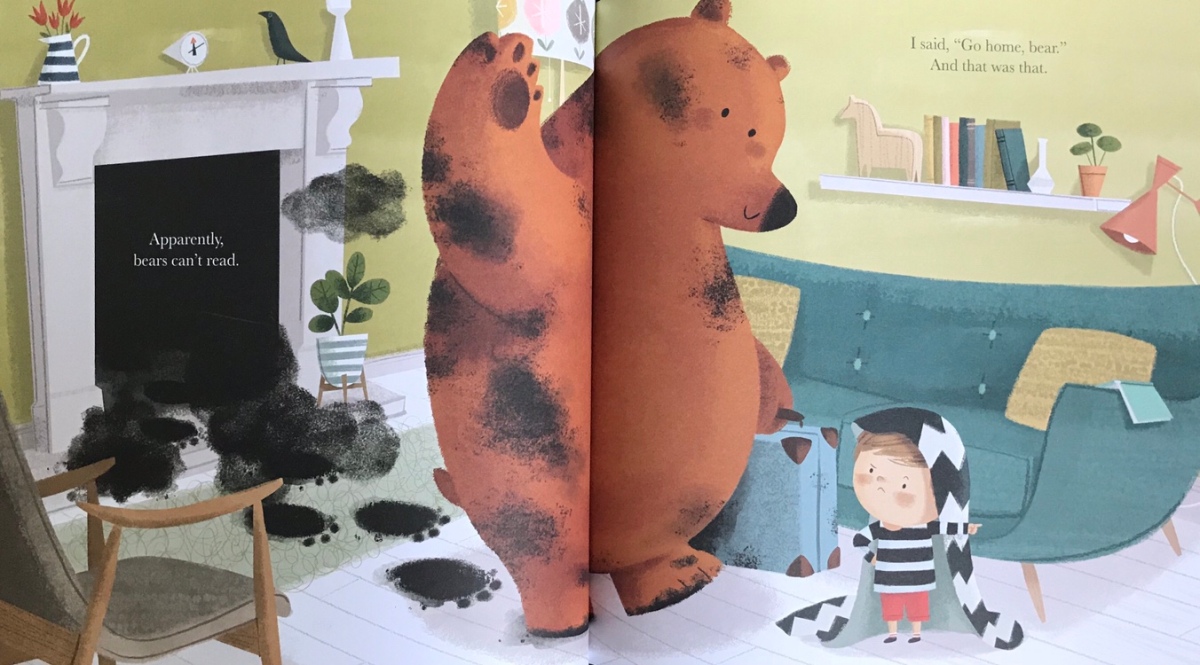
Apparently, bears can’t read. I said, “Go home, bear.” And that was that.

But the bear came back. Again. And again. And again. Things got a little ridiculous.

“I SAID GO HOME, BEAR!” And the bear didn’t come back.

As for Sunday? There was no bear anywhere. “This is unbearable!” I cried. I missed that bear. And that was that.

I organized a search party. I tacked up posters. I set out a bowl of berries.

Then I waited. And waited. And waited. I didn’t think he’d ever come back.

Then I found my bear. He came back! I said, “Welcome home, bear.”

Diva Dolores and the Opera House Mouse by Laura Sassi, illustrated by Rebecca Gerlings
Diva Delores and the Opera House Mouse by Laura Sassi, illustrated by Rebecca Gerlings, emphasizes that we all need help sometimes, and often that help comes from unexpected places. Delores is a spotlight-seeking opera singer. The mouse is a detail-oriented production assistant. Each has their strengths, weaknesses, and roles to play in the final show. But in her zeal to “enter center stage,” it is not until her performance suffers that Delores appreciates her own limitations or the mouse’s assistance. The delightful illustrations and operatic text (there are parts you just must sing) make it great fun and a frequent story time selection. We follow with a discussion about showing others appreciation with our words—please, thank you, excuse me—and recognizing that we each have our own talents. And for older children, the example of mouse demanding respect from Delores is a great starting point to discuss healthy friendships and how to set appropriate boundaries. Bonus: The references to operatic performance and composers provide a fun introduction to classical music and the performing arts.

Fernando loved chocolate and cheese on dry toast, and popcorn and gumdrops, but what he liked most… was feasting on Mozart, Puccini, and Strauss, and lending a paw at the Old Opera House. Delores loved glamour and spotlights and praise. She longed to be showered with fragrant bouquets. Now here was her chance, after years in the chorus, to take center stage and be Diva Delores! Me-me-me-me!

And yet, when Fernando said, “How do you do? I”m here to assist with your diva debut…” Delores said, “Nonsense!” and left in a huff. “A mouse help a diva? That’s not good enough!” No-no-no-no!
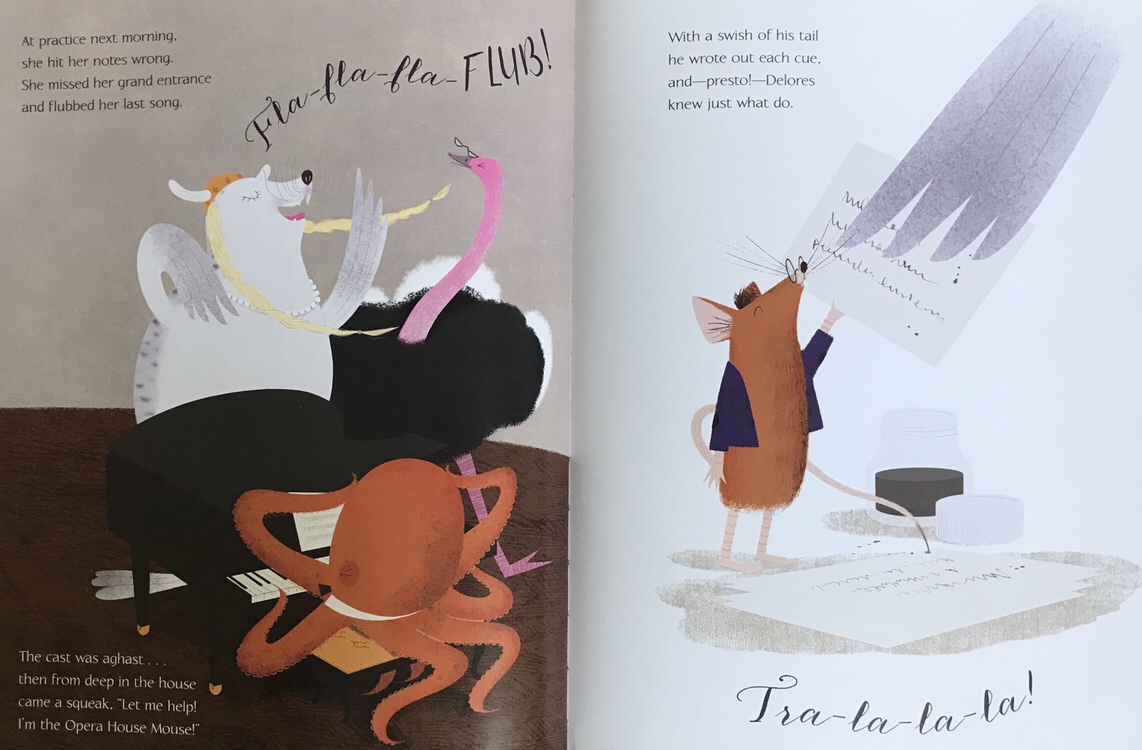
At practice next morning, she hit her notes wrong. She missed her grand entrance and flubbed her last song. Fla-fla-fla-FLUB! The cast was aghast… then from deep in the house came a squeak, “Let me help! I’m the Opera House Mouse!” With a swish of his tail he wrote out each cue, and—presto-Delores knew just what to do. Tra-la-la-la!
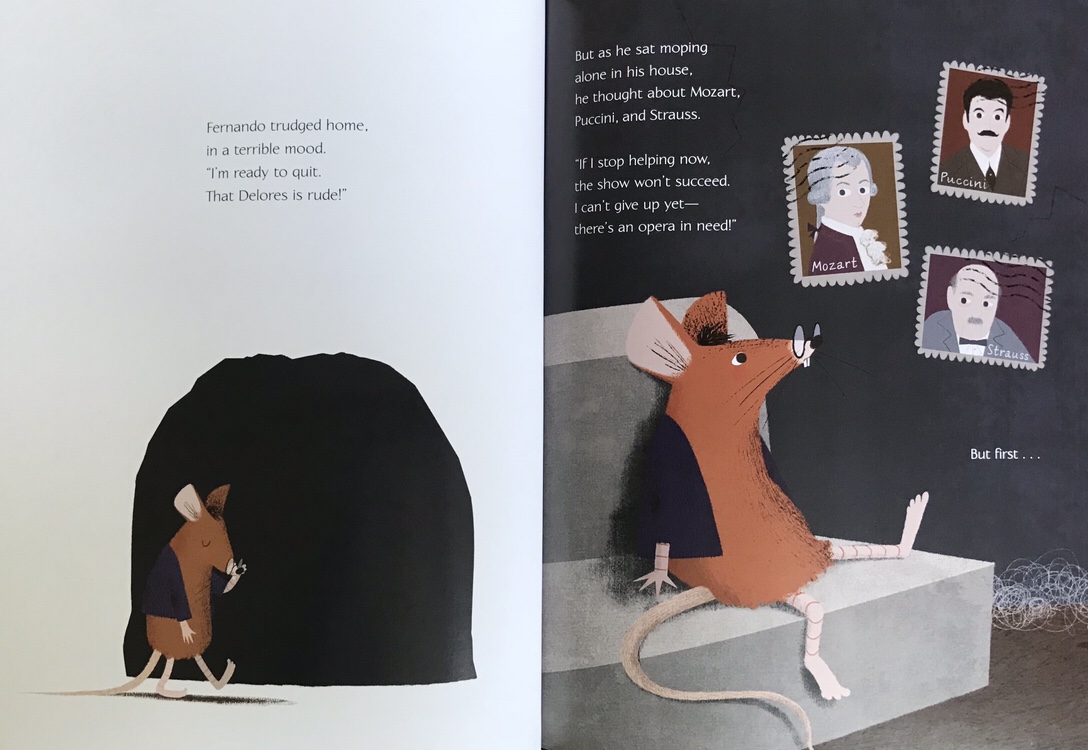
Fernando trudged home, in a terrible mood. “I’m ready to quit. That Delores is rude!” But as he sat moping alone in his house, he thought about Mozart, Puccini, and Strauss. “If I stop helping now, the show won’t succeed. I can’t give up yet—there’s an opera in need!” But first…

“Delores,” he said, in a voice strong and brave, “If I’m going to help you, you have to behave.” “For starters, I’d like to hear thank you and please when I help fix your dress or bring crackers and cheese.” Delores was stunned. Could Fernando be right? She needed to think, so she bid him good night. So lo-lo-lo-long!

Next morning was show day, and make no mistake. Delores had jitters. She felt her legs shake. She tried sucking candies. She tried sipping tea. She looked for Fernando. Oh, where could he be? Now standing on stage as the orchestra played, Delores felt faint. First she swooned… then she swayed. She opened her mouth, but nothing came out. Not a word. Not a sound. Then she spotted…

“Now that,” said Delores, “was a diva debut. I couldn’t have done it, dear mouse, without you.” Thank-you-you-you! Then heaving a sigh that was humble and true, she said, “I’m so sorry. Can we start anew?” “Of course!” cheered Fernando, with kindness and ease. “We’ll make a great pair—just like carrots and peas!” “Just like pretzels and salt!” “Just like coffee and cream!” “We’ll be Diva and Mouse…
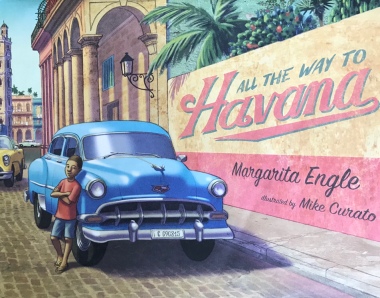 All the Way to Havana
All the Way to Havana by Margarita Engle, illustrated by Mike Curato, is is a visual delight with illustrations that capture both the beauty and poverty of Cuba. The story follows a young boy and his family as they travel to Havana in Cara Cara, a 1954 Chevy 210 Series. Although the car has been in the family for generations and requires daily repairs, it is a treasured possession that the boy looks forward to inheriting. Despite evidence of poverty throughout, this is not a story focused on absence or loss. Rather, it emphasizes appreciation for the things they do have: resourcefulness, friendships, family, creativity, and hope. Warm and immersing, the illustrations highlight the connectivity of people and their ability to find happiness without wealth. This is a great book to stimulate discussion about consumerism, resiliency, the value of relationships, and the history of Cuba’s socioeconomic circumstances. Bonus: The endpapers have beautiful, detailed classic car illustrations, and the book closes with notes from the author and illustrator about its creation.

We have a gift, and we have a cake, and today we’re going to drive all the way to the big city to see my new baby cousin on his zero-year birthday!

He listens to each tapping taca taca noise that Cara Cara makes as together we struggle to fix all the grunts, squeals, and grumbling clunk clunks that should be busy cluck, cluck, clucks. I choose a wrench, and a bolt, and a belt…. No luck, but we keep trying and trying, even though all the silly noises are still a mystery unsolved.

The road is bumpy, and our noisy car ends up so crowded with friendly neighbors who need a ride that I feel like we’re traveling in a barrel of elbows and knees. But we have a gift, and we have a cake, and we’re driving to my new baby cousins zero-year birthday!
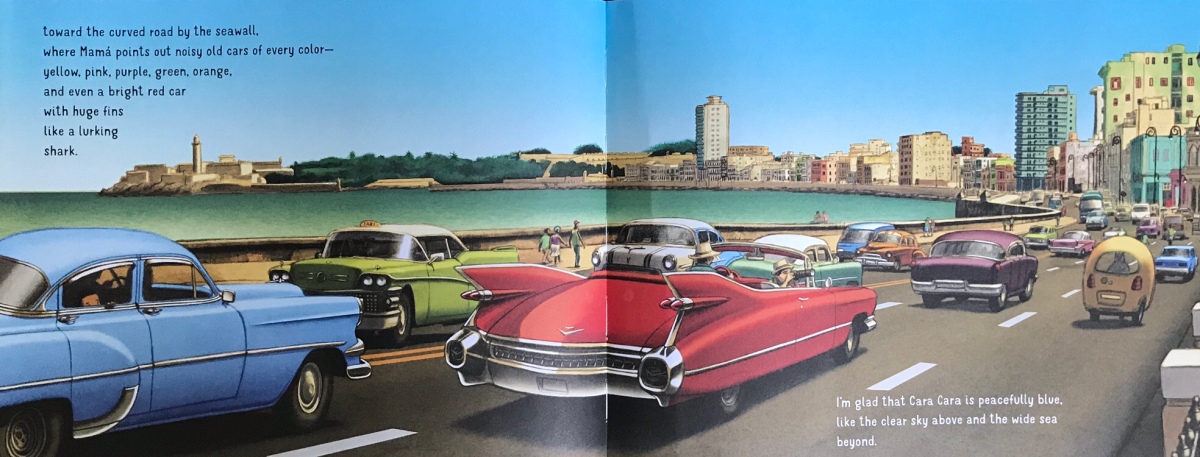
toward the curved road by the seawall, where Mama points out noise old cars of every color—yellow, pink, purple, green, orange, and even a bright red car with huge fins like a lurking shark. I’m glad that Cara Cara is peacefully blue like the clear sky above and the wide sea beyond.

but most just honk, honk, honk as they glide bumpety bump on potholed city streets

When we finally reach Tia’s house, I hub Abuelo, and everyone smiles as we admire the funny baby boy who is too little to know how to open a gift or play with the box and ribbon, or build a teetering mango and pineapple tower.

The next morning, we have to work under the hood once again, never giving up, never losing hope…. I’m eager to help Papa guess which tool is best. When he asks me which city-trip car I liked most, the answer is easy—our car! This noisy blue one, with its ragged seats and cloudy windows, because Cara Cara already belonged to our family on the day when Abuelo, my old grandpa, celebrated his zero-year birthday. Someday Abuelo’s car will be yours, Papa promises, making me feel as proud and powerful as the bold eagle that makes Cara Cara’s sky-blue hood look so brave!



These books sound lovely. I’m always keen to hear book recommendations and I think my girls would love these, especially the bear one – my eldest went through a phase of telling anyone who came to our house to “go home” so this one particularly stands out to me. #blogcrush
LikeLiked by 1 person
I hope you get a chance to read them!!😊
LikeLike
[…] Laura’s book Diva Delores and the Opera House Mouse was recently featured in my Appreciating What You Have post. Thank you, Laura, for joining me! Portions of Diva Delores just beg the reader to sing the […]
LikeLiked by 1 person
[…] Her book But the Bear Came Back was featured in my post on Appreciating What You Have. […]
LikeLike
[…] is the illustrator of Diva Delores and the Opera House Mouse, which was featured in my post about Appreciating What You Have. She has a wonderful new website that you should absolutely check […]
LikeLike